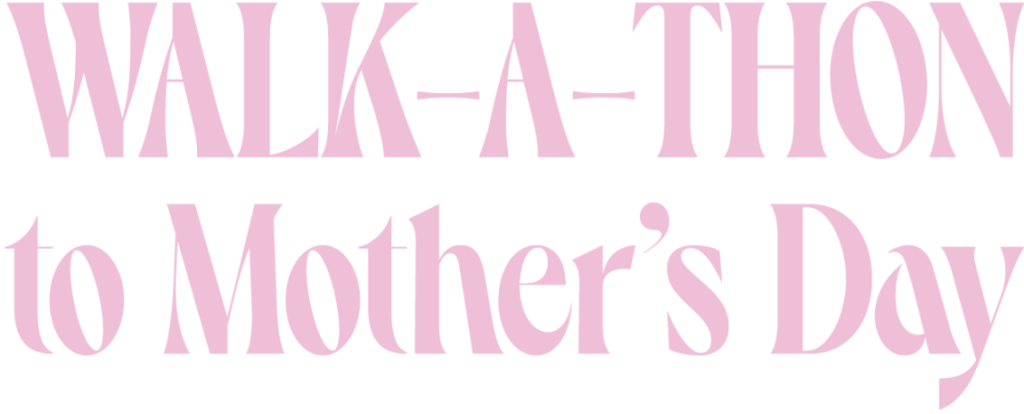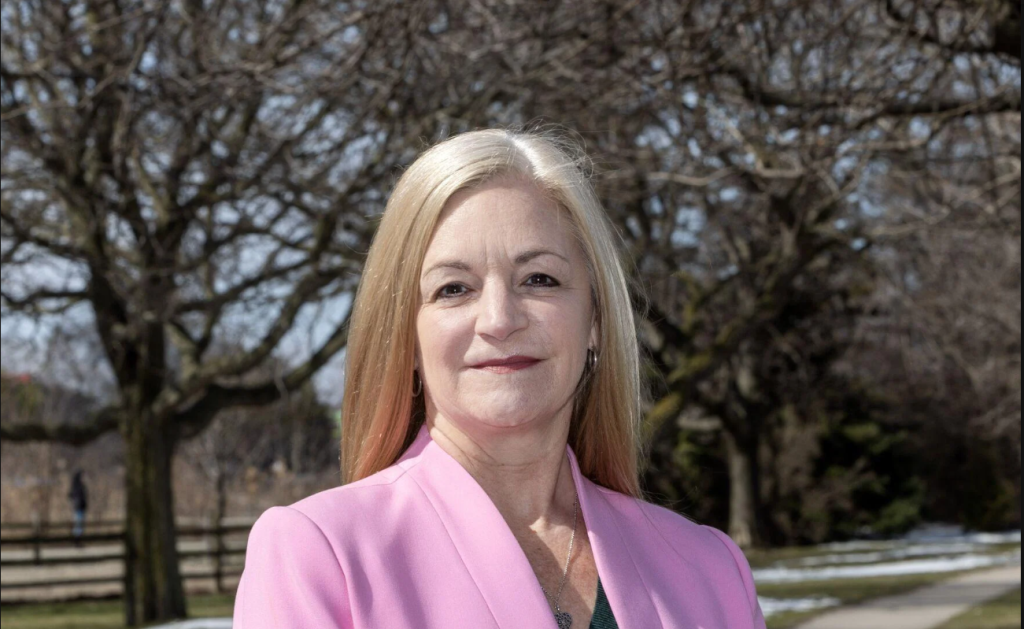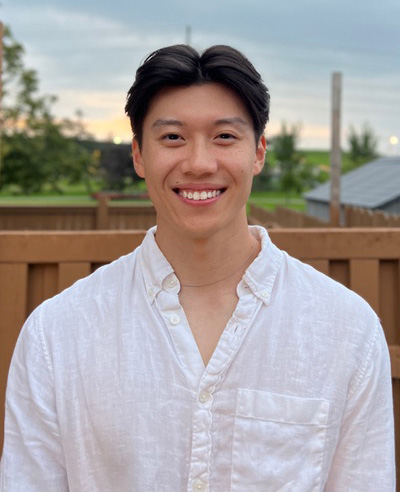Breast Cancer Canada CEO talks about using AI to prevent cancer – and a bra that detects tissue changes
Jared Lindzon Special to the Star
As breast cancer research enters the age of artificial intelligence, new innovations are shifting what it means to receive the diagnosis — with significant implications for individuals, researchers, governments and businesses.
Breast cancer rates have been rising among younger women, but at the same time advancements in screening, testing and treatment have dramatically improved outcomes for the roughly 29,400 women and 260 men who get the diagnosis in Canada each year.
These innovations are typically created in labs and on computer screens, but their progress depends on the institutions and people that come together to raise funds and lend their support.
“If you really need something done at a grassroots level, any kind of social change, it’s the not-for-profit sector that comes in and gets it done,” said Kimberly Carson, the CEO of Breast Cancer Canada. “I’ve always loved that passion that people bring to the table when they’re committed to a cause, whether for personal reasons or the greater good, and that passion for humanity is always driving me forward.”
Carson, who has spent most of her life in the not-for-profit sector, launched a successful printing business after completing an undergraduate degree in psychology at York University, but continued to volunteer whatever time she could. So, when Western University offered the country’s first degree in not-for-profit management, Carson dropped everything to pursue her second undergraduate degree — followed by a Masters of Arts in Leadership.
“I had an undergraduate degree already from York University; I went on to do that degree as well,” she said, adding that she was proud to be part of the program’s first graduating class.
Before joining Breast Cancer Canada, Carson was national director of development and communication at Inclusion Canada, formerly the Canadian Association for Community Living. Over the last 30 years, Carson has thrown herself into a range of causes serving on boards, fundraising and advocating for organizations like the Toronto and Region Conversation Authority and the Big Brothers Sisters of Canada.
She joined Breast Cancer Canada as CEO in 2015, at a time when the institution was seeking a new direction, looking to fund new research and attempting to cement Canada’s place in the global fight against what was recently declared the world’s most common form of cancer.
What first interested you in the non-profit sector?
I’ve always loved the passion that people bring to the table, whether for personal reasons or for the greater good.
At the start you get a feel for how to manage events, understand what the point of an event is and what we’re trying to achieve from having an event. You move from there into ‘what do we do with those people are passionate about the cause that you’re looking for? How do we inspire them to become closer to the organization?’
Through that we move into major gifts where you’re speaking to very philanthropic donors who are passionate about what you’re doing. It’s about understanding the sector, understanding what’s of interest to people and understanding the organization you’re working with.
What was your mandate when you joined Breast Cancer Canada as CEO ?
They were looking for new leadership, they were also trying to achieve a certain objective to make it truly national, to digitize the office, to see whether we were aligned with our donors, looking at what research we had been funding or whether we should look at new research.
We established a scientific advisory committee with some of the leading medical scientists in Canada to help us determine the overview of the scientific funding that we were already providing, and then direct us into the future.
Having been there for over eight years, the changes are unbelievable, and it’s exciting to see.
What kind of changes?
Number one, there’s much more data. The patient voice has also taken a spot at the forefront of our research. We also used to think there were only three types of breast cancer; we now know there are over 50.
Our treatments now are very targeted. We do precision oncology, or personalized medicine. We look at your breast cancer, how you’re responding to the treatments in your situation specifically. It’s very personalized and very targeted.
And of course, the installation of Artificial Intelligence (AI) into health care. That has dramatically affected the industry.
How has AI affected breast cancer research?
I’ll give you a good example: Right now, the industry is scanning millions of mammograms and following those patients to see which ones develop breast cancer, and what type, to see if we can use AI as a predictor. That’s a huge change: instead of combating breast cancer, it’s now more about predicting and preventing it.
How are you getting the data you need to advance those kinds of efforts?
We recently launched the PROgress Tracker registry, which is research we’re funding directly — the PRO stands for “patient reported outcomes.” We’re asking Canadians who have experienced breast cancer to sign up and tell us their story. They’re asked to answer questions four times a year so we can see the long-term effects. We will follow those patients for 10 years and follow up for another 10 years.
What do you hope to achieve with that database? What are the potential implications?
Hearing from the breast cancer patients themselves, we’re going to be able to learn what the real issues are.
For example, we know there are a lot of financial implications that come with a breast cancer diagnosis but what, exactly, we’re not sure. So, can the financial sector step up and help these people in the future if we know what those gaps are?
If you’ve had a breast cancer diagnosis, you no longer qualify for life insurance. Should that really be the case? Maybe not. If there’s no chance of your breast cancer coming back, why can’t you? We don’t know until we collect the data.
In health and wellness and fitness, we hear from a lot of breast cancer patients how difficult it is to go back to physical exercise. So, how can the health and wellness industry respond? What about mental health? Sleep patterns? Financial assistance? Physical well-being? What about family implications?
Will data will create a new demographic, with products and services tailored to breast cancer survivors?
I don’t see why not. We’re already seeing the potential for that with at-home testing products.
One of the studies that we put some funding toward is a bra that detects changes in breast tissue, which is the first indicator that you need further testing. We also hope to see a blood test, where we’ll be able to detect changes in your blood to determine if you need to see a primary caregiver.
What role does Canada play in the global fight against breast cancer?
We have some pretty fantastic researchers right here in Canada that do a phenomenal job. Breast Cancer Canada was proud to support Princess Margaret with a grant for $3 million last year to help determine who’s at high risk, and they’re working with other institutions around the world. Canada is also often the first to have patients enrolled in clinical trials that are on the leading edge of treatment.
What has been the cumulative effect of this progress? Do you think we’ll eventually eradicate breast cancer?
The incidence rate is still sitting at one in eight for women, but the survival rate is better than ever. There was a day when after a breast cancer diagnosis you went home to get your affairs in order, and that’s just not the case anymore. Now if we catch it at stage zero, stage one — even stage two — your chances of survival are in the high 80 per cent range. Even if your breast cancer returns, your chances of living for a very long time with breast cancer are really great.
Obviously, we would love to see an end to breast cancer — that’s what we fight for every day — but in the short term we’d like to make it something you live with, and that it’s not life-threatening.




